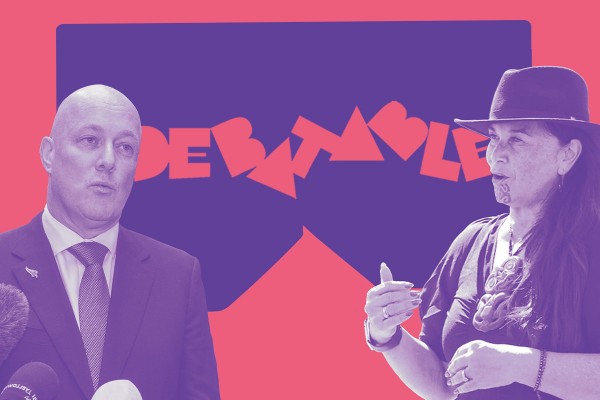Debatable is a column written by the Otago University Debating Society. The Debating Society welcomes new members and meets at the Business School every Tuesday at 6pm.
Against
It’s clear that the New Zealand government isn’t living up to its obligation to promote te reo Māori (an official language in New Zealand, mind you). It's also clear that issues surrounding te reo are still controversial to a vocal minority of the New Zealand population – think the old white boomers on Facebook who have cars as their profile picture.
There’s also political parties who are more than happy to politicise this issue; we need only look at Act’s recent endeavours to see as much. These sentiments extend to National as well, with Minister for Transport Simeon Brown stating on record that he believes that there’s sufficient evidence to suggest that bilingual road signs negatively impact safety. These claims and complaints demonstrate a desire to resist change, which may be indicative that any future measures are likely to be met with similar resistance.
Taking all this into consideration, it’s clear that attempts at implementing policy for bilingual road signs will use political capital that could otherwise be used to promote te reo in other (perhaps less controversial) ways. And at the end of the day, the jury is still out on whether road signs would actually do anything to shift crusty attitudes or whether they’re more of a tokenistic gesture.
There are bigger issues facing te reo Māori and an ongoing debate about relatively trivial road signs distracts from issues such as providing funding for te reo in schools or the role of tikanga in New Zealand society. It’s clear that last year’s election has resulted in a far more hostile and divisive political environment. The time for bilingual road signs will come, but for now there are far more pressing matters to attend to.
For
The introduction of bilingual road signs is a hugely practical step towards making the use of te reo a more common part of day-to-day life. The Crown has an obligation to do as much, given te reo is an official language and therefore has equal status to English. The introduction of these signs could be done in phases, slowly replacing all the street signs stolen after a night on the piss and to give your grandma enough time to adjust. It would make the cost far more negligible, preventing potential attacks that the likes of old pal David Seymour could level against it.
As much as New Zealand likes to consider itself to be a world leader and a forerunner in adopting milestone policy (shoutout David Lange), we fall behind in recognising the importance of greater implementing te reo Māori. Ireland has had bilingual street signs since the 1920s – it could be about time we caught up.
Using te reo in everyday language is by no means a brand new phenomenon, either. Many government agency names use ingoa Māori. The potential dangers posed by these signs that Simeon Brown points to are negated by a Waka Kotahi report; two different versions of the word aren’t going to confuse a driver – and if they do, that driver probably shouldn’t be on the road in the first place.
Bilingual road signs represent a move towards the Crown honouring its Te Tiriti obligations, is a significant move to recognise and enhance the mana that these place names carry, and to recognise how integral te reo is to New Zealand’s identity.



